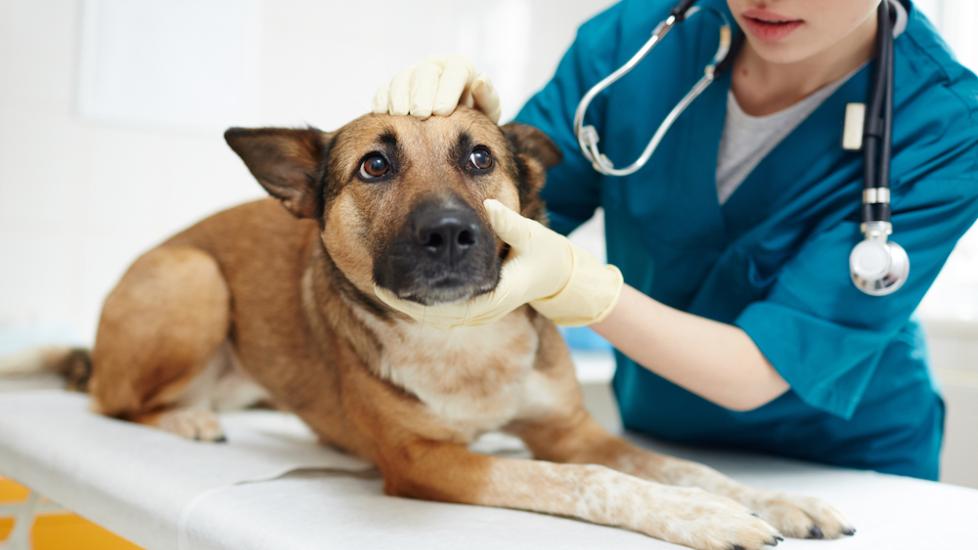Understanding Ataxia: A Canine Condition that Affects Balance and Coordination
Living with a dog is often a joyous experience, filled with companionship, affection, and the simple pleasures of daily walks and playtime. However, just like humans, dogs can suffer from various health conditions that impact their quality of life. One such condition is ataxia, which refers to a lack of coordination and an inability to control body movements. In this article, we will delve into what ataxia means for our four-legged friends, its causes, symptoms, treatments, and preventive measures.
What Is Ataxia?
Ataxia is not a single disease but rather a symptom—a manifestation of poor muscle control due to issues within the central nervous system (CNS). It affects both voluntary and involuntary muscular movement, leading to unsteady gait, clumsiness, and other motor impairments. The severity of ataxia can vary widely; it might be temporary or permanent, depending on the underlying cause.
Causes of Dog Ataxia
Dogs may develop ataxia as a result of numerous factors, including genetic predisposition, nutritional deficiencies, toxicity, infections, inflammatory diseases, cancer, and degenerative disorders affecting the brain or spinal cord. Some common causes include:
- Genetic Disorders: Diseases like cerebellar abiotrophy are inherited and characterized by progressive cerebellar damage.
- Vestibular Disease: This condition affects balance and can lead to ataxia, dizziness, and nausea.
- Intervertebral Disc Disease (IVDD): Pressure on the spinal cord caused by herniated discs can disrupt nerve function.
- Infections: Viral, bacterial, or fungal infections in the CNS can trigger inflammation and neurological signs.
- Toxins: Exposure to certain chemicals, plants, or medications can poison the nervous system and induce ataxia.
- Nutritional Imbalances: Deficiencies in thiamine (vitamin B1), copper, or other essential nutrients can contribute to ataxia.
- Neoplasia: Tumors pressing against the brain or spinal cord can induce symptoms similar to those seen in ataxia.
Symptoms of Dog Ataxia
The primary sign of ataxia is an obvious loss of coordination and gait abnormalities where the dog appears wobbly or “drunk.” Other observable symptoms include:
- Wide stance when standing
- Difficulty walking in a straight line
- Falling over easily
- Head tilting or circling behavior
- Muscle weakness or tremors
- Abnormal eye movements or pupil size
- Changes in vocalization
Diagnosis and Treatment of Dog Ataxia
To diagnose ataxia, veterinarians typically perform a thorough physical examination followed by diagnostic tests such as blood work, urinalysis, imaging studies (X-rays, CT scans, MRI), and sometimes cerebrospinal fluid analysis. These help identify any underlying problems contributing to the ataxia. Once diagnosed, treatment options depend on the cause but could involve:
- Medications to manage pain, seizures, or inflammation.
- Physical therapy and rehabilitation exercises to maintain strength and flexibility.
- Dietary changes or supplements to address nutrient imbalances.
- Surgery if necessary to correct structural abnormalities or relieve pressure on the spinal cord.
Preventive measures focus on maintaining good overall health through regular check-ups, vaccinations, and avoiding exposure to toxins. For hereditary forms of ataxia, responsible breeding practices can reduce incidence rates.
Living with a Dog with Ataxia
Owners of dogs suffering from ataxia must provide a stable environment with minimal stress and plenty of love. Adapting the home to accommodate your pet’s needs might mean adding ramps for easier access or providing softer bedding for comfort. Regular veterinary visits are crucial for monitoring progression and adjusting treatment plans accordingly. With patience, understanding, and dedication, many dogs with ataxia can still enjoy comfortable lives surrounded by the care they deserve.
In conclusion, ataxia is a complex condition that requires early detection, proper diagnosis, and tailored management strategies. By recognizing the signs and seeking veterinary assistance promptly, you can support your furry companion throughout his journey towards living well despite this challenging condition.
